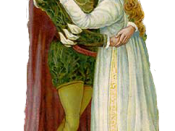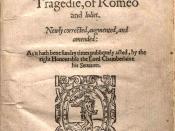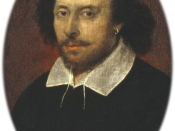When we think of a tragedy, instantaneously the classic Shakespearean tragedy Romeo and Juliet springs into our mind. Thoughts of lost love and torments abound. The most human of emotions, sorrow, overwhelms us. We shudder, a chill creeps up our spine. We agonize over the tragedy, and the tragic figure. We lose sight of reality, and stumble headlong into the story. Enthralled by the suspense, captured by the Irony that, 'we know' what plight lies ahead for the characters. We become enraptured by tragedies. We feel the pain, the suffering and the helplessness of the characters as the tragedy unwinds. However powerful a story Kate Chopins' The Awakening may be, it is by no means a tragedy. The Awakening does not posses the necessary components of a tragedy. There is no tragic figure, there is no tragic plot or theme, and the ending is far from tragic.
First, tragic figures must captivate the audience.
They must create an atmosphere that is shrouded in irony, suspense and mystery. These figures must also make the audience love them, feel for them and experience the anguish and pain they will undergo. King Lear is a great example of a tragic figure. He appeals to the reader, and captures their attention. The reader ends up sympathizing for him, and wanting him to overcome the obstacles which block his path. He motivates the emotion of the audience and controls their feelings. Edna Pontellier does not have the depth of character or ability to be a tragic figure. From the opening chapters she is portrayed as a troubled woman, one who is captured within a society where she does not belong. Her marriage to Leonce is one of convenience, there is no love, no passion, and no affection between them. Edna portrays a woman who is...


